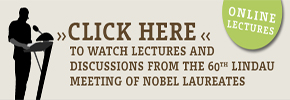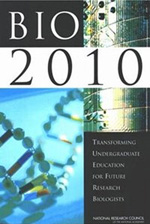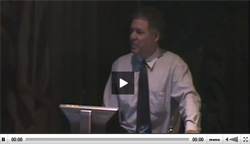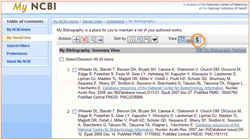This year, I’m the lucky NIGMS program director attending the 60th Annual Lindau Nobel Laureate Meeting in Lindau, Germany. Like John Schwab, who traveled with last year’s group, my main job is to help the 16 super-energetic, really smart graduate students we sponsored interact with each other, hundreds of their peers from all over the world and, of course, dozens of Nobel laureates.

The Lindau meeting, which started in 1951, is designed to “educate, inspire and connect” generations of scientists by bringing together Nobel laureates with young researchers. Unlike last year’s meeting, which focused on chemistry, this year’s is more interdisciplinary. It showcases all three of the Nobel Prize natural science fields: chemistry, physics and physiology or medicine.
As you might imagine, the competition for student slots is fierce, with more than 40,000 applying for 650 slots this year. The U.S. contingent consists of 75 students supported by the Oak Ridge Associated Universities (ORAU), the National Science Foundation, the Department of Energy, Mars (the company, not the planet!) and NIGMS/NIH.
It’s quite appropriate that NIGMS is involved in this program again this year. Our portfolio of funded research is extremely diverse, including a lot in chemistry and physics. After all, an interdisciplinary approach can help us better address problems relevant to human health. And around NIH, NIGMS is also widely called the “Nobel Prize Institute”—we’ve funded the Nobel Prize-winning of research of 73 laureates, and some of them are here in Lindau.
So far, the trip is going pretty well. We’re surrounded by World Cup fever! We haven’t had much of a chance to meet the laureates yet, since the opening ceremony was just on Sunday. I know that much of the close laureate-student interactions will take place through small group discussion sessions set up for this purpose.
I truly feel fortunate to be here—for the interactions, the interdisciplinary science and what I anticipate will be really inspiring lectures by the laureates. But even if you can’t be here, you can still watch the scientific proceedings online and follow the meeting using a variety of social media.
Post submitted from Lindau, Germany, on Monday, Jun 28, 2010 6:25 PM CEST



 Last month, I attended the “Beyond Bio2010” conference held at the National Academy of Sciences. The meeting highlighted the progress made in implementing the Bio2010 recommendations, chiefly to transform undergraduate biology education by using the quantitative sciences (mathematics, chemistry, physics, engineering and computer sciences) to study biology and vice versa.
Last month, I attended the “Beyond Bio2010” conference held at the National Academy of Sciences. The meeting highlighted the progress made in implementing the Bio2010 recommendations, chiefly to transform undergraduate biology education by using the quantitative sciences (mathematics, chemistry, physics, engineering and computer sciences) to study biology and vice versa. The Advisory Committee to the Director, NIH (ACD) is a group knowledgeable in the fields of research pertinent to the NIH mission. It includes individuals from the academic and private sector research communities as well as representatives of the general public.
The Advisory Committee to the Director, NIH (ACD) is a group knowledgeable in the fields of research pertinent to the NIH mission. It includes individuals from the academic and private sector research communities as well as representatives of the general public. NIH has announced a significant upgrade to the citation management capability of investigators’ personal profiles in the eRA Commons.
NIH has announced a significant upgrade to the citation management capability of investigators’ personal profiles in the eRA Commons.